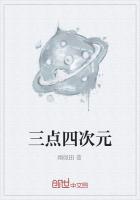This abnormal state of affairs was manifestly prejudicial to his work, but it had, nevertheless, the happy result of bringing his students closer to him, for it allowed them, at times, to share in his personal scientific interests.
His return to experimental research is marked by a profound study of the "direct reading periodic precision balance for least weights." (, , .) In this balance, the use of small weights is suppressed by the employment of a microscope by means of which one reads a micrometer attached to the extremity of one of the arms of the balance. The reading is made when the oscillation of the balance is arrested, which can occur very rapidly, thanks to the use of pneumatic dampeners conveniently constructed. This balance marks a considerable advance over old systems. It has shown itself particularly valuable in laboratories for chemical analysis, where the rapidity of the weighings is frequently a test of precision. We can say that the introduction of the Curie balances marks an epoch in the construction of these instruments. The work done in this field was far from empirical; it comprised a study of the theory of damped movements and the construction of numerous curves established with the aid of some of his students.
It was toward that Pierre Curie began a long series of investigations on the magnetic properties of bodies at divers temperatures(from the normal up to ℃). These investigations, covering years, were presented as a Doctor's thesis before the Faculty of Sciences of the University of Paris in . In it he stated precisely in the following few words the object and results of his work:
"From the point of view of their magnetic properties, bodies may be divided into two groups: diamagnetic bodies, bodies only feebly magnetic, and paramagnetic bodies. At firstsight the two groups seem entirely separate. The principal aim of this research has been to discover if there exist transitions between these two states of matter, and if it is possible to make a given body pass progressively through them. To determine this I have examined the properties of a great number of bodies at temperatures differing as much as possible, in magnetic fields of varying intensities.
"My experiments failed to prove any relation between the properties of diamagnetic and those of paramagnetic bodies. And the results support the theories which attribute magnetism and diamagnetism to causes of a different nature. On the contrary, the properties of ferro-magnetic bodies and of bodies feebly magnetic are intimately united."
This experimental work presented many difficulties, for it necessitated the measuring of very minute forces (of the order of / of a milligramme weight) within a container where the temperature could attain ℃.
As Pierre Curie well understood, the results he obtained are, from a theoretic point of view, of fundamental importance. The Curie law, according to which the coefficient of magnetization of a body feebly magnetized varies in inverse ratio to the absolute temperature, is a remarkably simple law. It is quite comparable to the Gay-Lussac law relating to the variation of the density of a perfect gas with the temperature. In his well known theory of magnetism P. Langevin, in , took into account the Curie law and arrived again, theoretically, at the difference between the origins of diamagnetism and paramagnetism. His work, as well as the important investigations of P. Weiss, demonstrated the accuracy of Pierre Curie's conclusions, as well as the importance of the analogy that he perceived between the intensity of magnetization and the density of a fluid -- the paramagnetic state being comparable to a gaseous state, and the ferro-magnetic state to the state of condensation.
In connection with this work, Pierre Curie spent some time in the search for unknown phenomena whose existence did not seem, a priori, impossible to him. He sought for bodies strongly diamagnetic, but found none. He tried to discover, too, if there were bodies that acted as conductors of magnetism, and if magnetism can exist in a "free state," like electricity. Here also the result was negative. He never published any of these investigations, for he had the habit of thus engaging in the pursuit of phenomena, often with little hope of success, solely for the love of the unforeseen, and without ever thinking of publication.
Because of this entirely disinterested passion for scientific research the presentation of a doctor's thesis which would give an account of these early investigations had never appealed to him. He was already thirty-five years old when he decided to gather together, in such a thesis, the results of his beautiful work on magnetism.
I have a very vivid memory of how he sustained his thesis before the examiners, for he had invited me, because of the friendship that already existed between us, to be present on the occasion. The jury was composed of Professors Bonty, Lippmann, and Hautefeuille. In the audience were some of his friends, among them his aged father, extremely happy in his son's success. I remember the simplicity and the clarity of the exposition, the esteem indicated by the attitude of the professors, and the conversation between them and the candidate which reminded one of a meeting of the Physics Society. I was greatly impressed; it seemed to me that the little room that day sheltered the exaltation of human thought.















